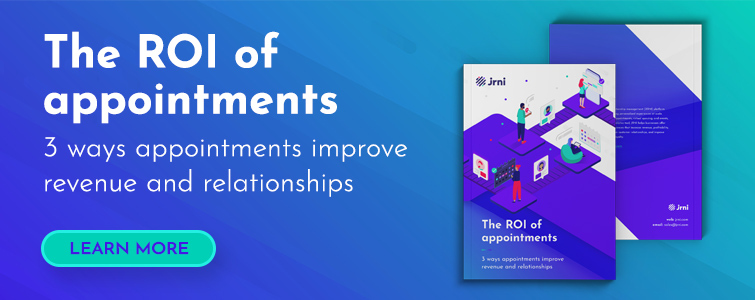We’ve talked about experiential relationship management (XRM) before - and how an XRM strategy can help you deliver the experiences your customers not only want, but expect. The types of experiences that turn a customer into a loyal customer. And doing it right means you need to provide unique experiences, offer human-to-human connections, build personalized relationships, and do it all at scale.
But what does that actually mean for your financial institution? And how can you step up your XRM strategy? Well, we’re here to help! Here are three ways you can level up your customer engagement strategy to build customer loyalty and drive customer lifetime value (CLV).
1. Use data to drive decision making
In a recent report from BAI Banking Outlook, data shows that two thirds of financial services organizations “sometimes” or “infrequently” use customer data. If you’re not using customer data to build stronger relationships and increase retention, then it’s going to cost you. In fact, banks spend approximately $200 to acquire a new customer, yet their average customer generates $150 in revenue annually. When profitability is tied to CLV, the importance of using data to improve customer satisfaction and loyalty cannot be understated. Using analytics allows your financial institution to develop insights on customer segments and behaviors to more precisely target and tailor products for customers. Studies show this can lead to an increase in sales productivity as much as 40%.
Additionally, financial institutions need to leverage analytics data to provide better experiences. According to the Financial Brand, “Financial institutions must move from using data and analytics for great internal reports to using data, analytics, and content for exceptional experiences.” We couldn’t agree more! By utilizing your data to better understand and serve your customers, you can ensure you’re providing not only a great customer experience, but a memorable one.
You need to analyze your customer engagement strategy to truly understand the value of the experiences you provide and to better prepare your teams in the future. Some important metrics to consider tracking:
- What services and appointment types are most popular?
- Are your locations properly staffed to accommodate busy times?
- Are your locations properly staffed with the expertise needed?
- What are your lead and wait times?
- What is your cancelation rate?
- What is your no-show rate?
Leaning on the power of your customer journey data is a vital way to keep track of your organization’s success and a surefire way to level up your experiential relationship management strategy!
2. Meet customers on their terms
While we’ve seen a lot of changes in customer behavior during the pandemic, the one thing that remains constant is that your customers want to do business with you on their terms. Omnichannel banking means meeting your customers where they are.
And while the pandemic escalated the need to provide digital and remote financial services like video banking, a recent study shows that 73% of consumers prefer having in-person interactions with experts when receiving financial advice. Being able to meet the demands of the hybrid consumer means being able to provide services across all channels, allowing them to do business with you via your website, mobile app, in-branch, or remotely.
Take, for example, your checking and savings account options:
- Are your customers able to book an in-person or remote appointment to open an account?
- Are they able to book this type of appointment in a way that’s most convenient to them? On your website, your app, or by calling into a local branch?
- Are they able to book a follow-up appointment to ask questions about their new account?
- Do they have an easy way to contact your staff members or customer support team with questions about your checking and savings account options either online, on the app, or by phone?
What it comes down to is being able to meet your customers’ needs. As a financial institution, you have to make sure you are available to them - and for them. And in today’s world, you need to be available anytime, anywhere via any device, regardless of transaction, to make your customers feel heard and secure.
3. It’s time to get personal: Personalization is key
From your favorite streaming app’s home screen of show recommendations to your favorite retailer recommending products based on previous purchases, personalization is everywhere. And consumers are becoming even more accustomed to this personalization, especially given the increased screen time during the pandemic.
Guess what’s going to help you transform your customer engagements into personalized, memorable experiences? That’s right, data! Just as many retailers use customer data to tailor looks and make customized product suggestions, financial institutions too can make customized product recommendations based on customer history and previous conversations. There is so much value you can derive from diving into your data and using it to arm your staff and business with the knowledge to personalize at scale.
To make your experiences memorable, you have to personalize your banking services in a way your customers will remember. Knowing their needs and how you can help them is key. Your customers should feel like they are truly benefiting from you - that you understand their financial needs and are recommending the right products. They want to be heard and know they are cared for. They want to know they can depend on you with something as sensitive and personal to them as their finances.
Plus, the stats don’t lie - your consumers crave personalization! According to EY, 40% of customers say they would be more likely to stay with their financial services provider if it offered more personalized service. In addition, 70% of customers say a company’s understanding of their personal needs influences their loyalty. One final personalization stat to note: according to BCG, for every $100 billion in assets that a bank has, it can achieve as much as $300 million in revenue growth by personalizing its customer interactions. There is no question that personalization is key to your strategy and success.
And while personalization is key to your strategy... the key to personalized experiences is being able to do it at scale. That’s why using software to help manage and schedule your customer engagements, be it an in-person appointment or a video call to discuss loan options, can serve all of your customers in a personalized way at scale.
So how are you leveraging your data and tools to increase revenue, build stronger customer relationships, and improve customer loyalty? If you’re not using the power of your data, providing omnichannel service options, and prioritizing personalization, then it’s time to start! The experience economy is here - and the financial institutions that are going to thrive are already implementing an XRM strategy.
Don’t know where to get started or how?! At JRNI, we’re all about helping our customers provide memorable, personalized experiences! Our XRM platform might be just what you’re looking for to step up your game. If you want to learn more about the ROI of providing unique, human-to-human experiences, then download our eBook “The ROI of appointments”.




